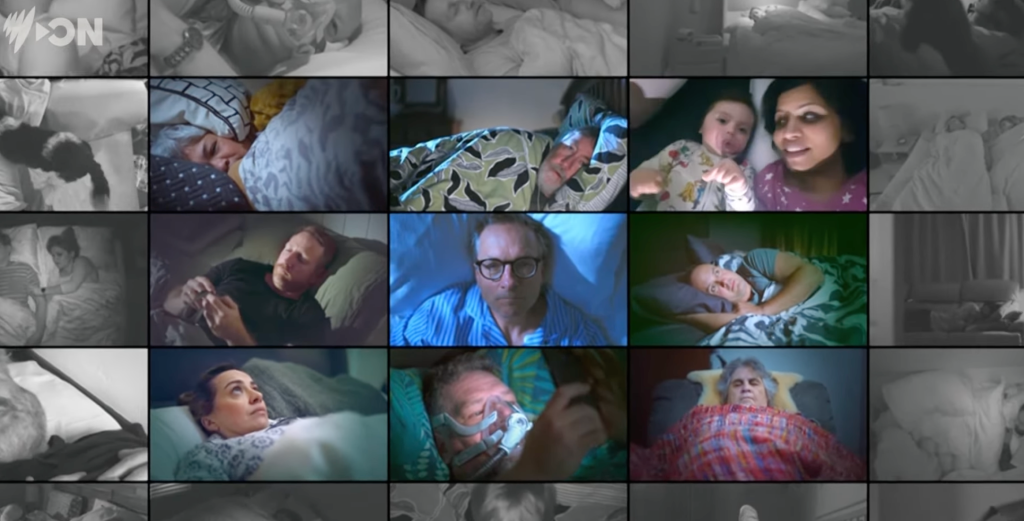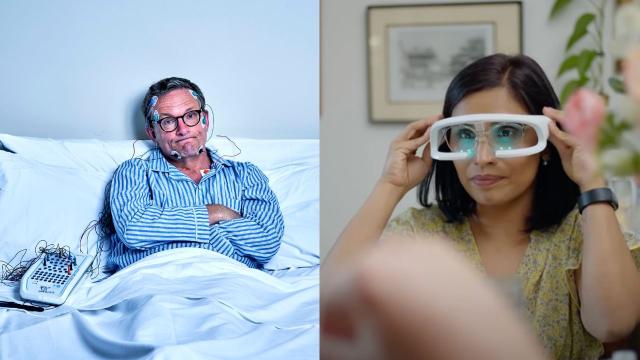On March 6, SBS introduced a new documentary series to audiences, titled Australia’s Sleep Revolution With Dr. Michael Mosley. The docuseries focuses in on what it refers to as the “growing sleep crisis” in the country, and follows a handful of particularly troubled sleepers who agree to undergo an eight-week treatment program under the care of Dr Mosley.
The program was run through the Flinders University Sleep Institute, and engages with common sleep conditions like insomnia and sleep apnoea. Considering studies indicate that as much as 40 per cent of Australians are struggling with inadequate sleep, we thought it would be useful to chat with some of the people behind Australia’s Sleep Revolution docuseries to learn more about the treatment program and what was involved.
Table of contents
Australia’s Sleep Revolution With Dr Michael Mosley: What was involved?

Professor Danny J Eckert of Flinders University explained to us over email that throughout the SBS docuseries Australia’s Sleep Revolution With Dr. Michael Mosley, he and the team at Flinders University used “cutting-edge technology and personalised clinical methods to conduct a rigorous clinical trial and treat Dr Mosley and 30 Australians with a range of sleep disorders to improve the nation’s health through the science of sleep.”
“Initially, this included a detailed overnight diagnostic sleep study either in the home or in the Flinders sleep laboratory. In addition, depending on individual requirements, a range of in-home monitoring devices were used to get a better overall picture of peoples sleep problems which is not typically done in routine clinical care,” he shared.
These monitoring devices included technology like “an under-mattress sensor to monitor sleep timing and estimate sleep apnoea; a ring to measure oxygen levels; capsules to measure core body temperature to estimate circadian rhythm, and watches to estimate activity and sleep.”
From here, a team of medical professionals (sleep doctors and psychologists) and scientists analysed the information collected twice per week “to personalise and modify the treatment plan based on the information from the in-home monitoring.”
Participants received assorted tailored treatments including “weekly cognitive behavioural therapy for insomnia with the psychologist, special light-emitting glasses and melatonin to reset the body clock, and dental splints and devices to keep people off their back for sleep apnoea.”
Results were then reviewed at the close of the treatment program to see how the trial performed.
President of the Australasian Sleep Association and Senior Respiratory and Sleep Physician, Dr Sutapa Mukherjee, added to this, sharing that:
“We chose 30 of the worst sleepers who had had sleep issues for several years and had tried many different things. We measured their sleep in traditional and new ways and talked about them in our multi-disciplinary team meeting every few days as we diagnosed them and started therapy. We condensed their treatment, which would take months, into eight weeks, and it was intensive for us and them.”
So, did the Sleep Revolution approach work?
Well, yes. It did.
Both Professor Eckert and Dr Mukherjee shared how pleased they were with the results of the trial.
“Before this trial, we had tested separate individual parts of this new tailored sleep disorders care model, but we had never put it altogether to see if it works collectively, Professor Eckert explained.
“This meant we had to build the tools to incorporate all this new information in a very short amount of time. As such, we were very pleased that we were able to achieve this. And while we were optimistic that it would work, even we were surprised by how well the participants responded with >80 per cent of the people who completed our novel treatment program having their sleep problems resolved.
“This is quite remarkable given how severe the sleep problems were for most of our participants many of whom had already tried multiple other treatments and some had had sleep issues for over 20 years.”
Professor Eckert continued, explaining that “measures of clinical insomnia and sleep apnoea severity reduced by >70 per cent for the study cohort following treatment”.
Additionally, elements like daytime fatigue for people with insomnia were reduced by over 70 per cent, and sleepiness in people with sleep apnoea dropped by 45 per cent.
Dr Mukherjee added that the success of the program really lies in “accurate diagnosis of the sleep disorder”. With this, simple therapies can become incredibly effective.
“Sleep quality in all our patients did improve regardless of the sleep disorder,” she said.
“…once again, it’s getting the right diagnoses for the patient each time and the right treatment which is tailored to the individual.”
And how do the participants feel?
We spoke with Jon Brooks, who took part in Australia’s Sleep Revolution With Dr. Michael Mosley.
Over email, he described his relationship with sleep before the trial as “A toxic relationship. I dreaded going to bed because it meant hours of staring at the roof, trying not to wake my partner.”
“My biggest struggles were getting to sleep and staying asleep. My sleep was like a fussy toddler tasting new food. One quick attempt, then ‘no thanks.’”
However, after undergoing the eight-week Sleep Revolution program (as documented by SBS), Brooks shared that his sleep quality had improved “dramatically.”
“The biggest impact has been on my mood. I’m much more level-headed, much more driven and optimistic. It’s life-changing,” he said.
When we asked Brooks what the biggest learning he took from the experience was, he simply responded:
“That sleep, no matter how broken, can be repaired.”
When and where can I watch Australia’s Sleep Revolution With Dr. Michael Mosley?
Intrigued? We know we are. Well, if you’d like to see more, episodes 1 and 2 of Australia’s Sleep Revolution With Dr. Michael Mosley are now available to watch on SBS on Demand. New episodes of the documentary series are dropping on SBS every Wednesday.
Lead Image Credit: SBS

Leave a Reply
You must be logged in to post a comment.